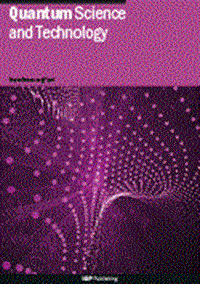Characterization and thermometry of dissipatively stabilized steady states
IF 5.6
2区 物理与天体物理
Q1 PHYSICS, MULTIDISCIPLINARY
引用次数: 0
Abstract
In this work we study the properties of dissipatively stabilized steady states of noisy quantum algorithms, exploring the extent to which they can be well approximated as thermal distributions, and proposing methods to extract the effective temperature T. We study an algorithm called the relaxational quantum eigensolver (RQE), which is one of a family of algorithms that attempt to find ground states and balance error in noisy quantum devices. In RQE, we weakly couple a second register of auxiliary ‘shadow’ qubits to the primary system in Trotterized evolution, thus engineering an approximate zero-temperature bath by periodically resetting the auxiliary qubits during the algorithm’s runtime. Balancing the infinite temperature bath of random gate error, RQE returns states with an average energy equal to a constant fraction of the ground state. We probe the steady states of this algorithm for a range of base error rates, using several methods for estimating both T and deviations from thermal behavior. In particular, we both confirm that the steady states of these systems are often well-approximated by thermal distributions, and show that the same resources used for cooling can be adopted for thermometry, yielding a fairly reliable measure of the temperature. These methods could be readily implemented in near-term quantum hardware, and for stabilizing and probing Hamiltonians where simulating approximate thermal states is hard for classical computers.求助全文
约1分钟内获得全文
求助全文
来源期刊

Quantum Science and Technology
Materials Science-Materials Science (miscellaneous)
CiteScore
11.20
自引率
3.00%
发文量
133
期刊介绍:
Driven by advances in technology and experimental capability, the last decade has seen the emergence of quantum technology: a new praxis for controlling the quantum world. It is now possible to engineer complex, multi-component systems that merge the once distinct fields of quantum optics and condensed matter physics.
Quantum Science and Technology is a new multidisciplinary, electronic-only journal, devoted to publishing research of the highest quality and impact covering theoretical and experimental advances in the fundamental science and application of all quantum-enabled technologies.
 求助内容:
求助内容: 应助结果提醒方式:
应助结果提醒方式:


